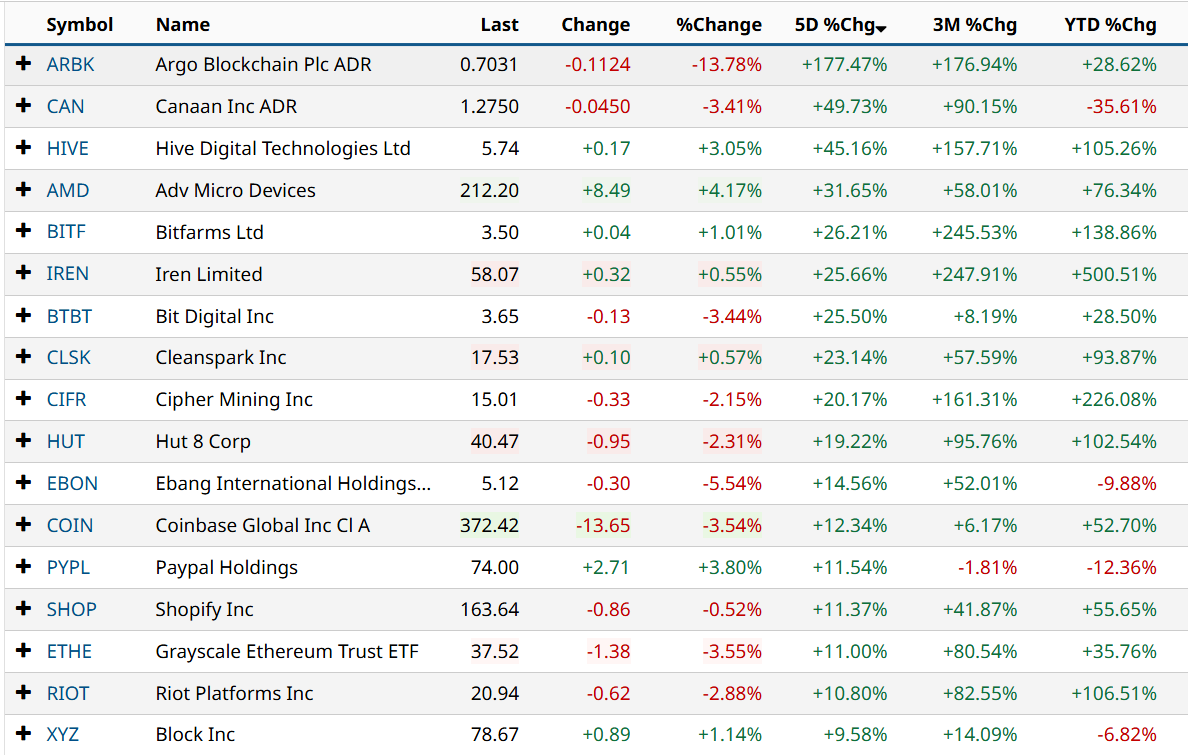
S&P Introduces Digital Markets 50 Index for Cryptocurrencies and Blockchain Stocks
The freshly launched S&P Digital Markets 50 Index aims to monitor a variety of cryptocurrencies and blockchain-connected companies, marking a significant milestone for digital assets in traditional finance.
S&P Global is set to release an innovative index that will track various digital assets along with companies in the blockchain space, demonstrating the increasing acceptance of cryptocurrencies in conventional finance.
The S&P Digital Markets 50 Index, developed in collaboration with the tokenization firm Dinari, will monitor 15 cryptocurrencies and 35 publicly listed companies in the blockchain sector, all of which must have minimum market caps of $300 million and $100 million, respectively. According to an announcement made by S&P on Tuesday, details concerning the constituents have yet to be disclosed, but no single asset will dominate the index, comprising no more than 5% of it.
Among the notable companies expected in the index are Bitcoin treasury management company MicroStrategy (MSTR), cryptocurrency exchange Coinbase (COIN), and Bitcoin mining firm Riot Platforms (RIOT).
 Stock Selection
Image of a selection of crypto and blockchain-related stocks from Bitcoin mining, exchanges, and payment platforms. Source: Barchart
Stock Selection
Image of a selection of crypto and blockchain-related stocks from Bitcoin mining, exchanges, and payment platforms. Source: Barchart
Cameron Drinkwater, the Chief Product and Operations Officer at S&P Dow Jones Indices, commented that the expanding ecosystem of digital assets is transitioning cryptocurrencies from the periphery to a more established role within global markets.
While standard indexes are not directly investable, they serve as vital benchmarks for gauging market performance and frequently underpin exchange-traded funds (ETFs) and other financial products.
Dinari has plans to release a tokenized variant of the index called a “dShare,” which will permit investors to achieve direct exposure to the index, with a launch planned before the close of 2025.
Indexing Signals the Next Wave of Crypto Recognition
An essential takeaway from the S&P’s entry into crypto indexing is the potential for passive ETFs to eventually reflect the performance of the Digital Markets 50 Index, similarly to traditional index funds tracking equity benchmarks. For instance, the SPDR S&P 500 ETF tracks the S&P 500, enabling investors to achieve broad market exposure through a single instrument.
Numerous cryptocurrency index funds are already in existence. The Bitwise 10 Crypto Index Fund (BITW), for example, mirrors the Bitwise 10 Index, which encompasses major digital assets based on market capitalization.
Likewise, products like the Hashdex Nasdaq Crypto Index (including HASH11 in Brazil and the Hashdex Nasdaq Crypto Index US ETF (NCIQ) in the United States) offer diversified exposure to key cryptocurrencies through regulated exchange-traded instruments.
Simultaneously, there is increasing acknowledgment that tokenization represents a transformative financial technology.
As previously reported by Cointelegraph, the US Securities and Exchange Commission (SEC) is looking into a framework that would facilitate the trading of stocks as tokenized assets on blockchain networks, potentially bridging traditional securities and crypto-style infrastructure.



